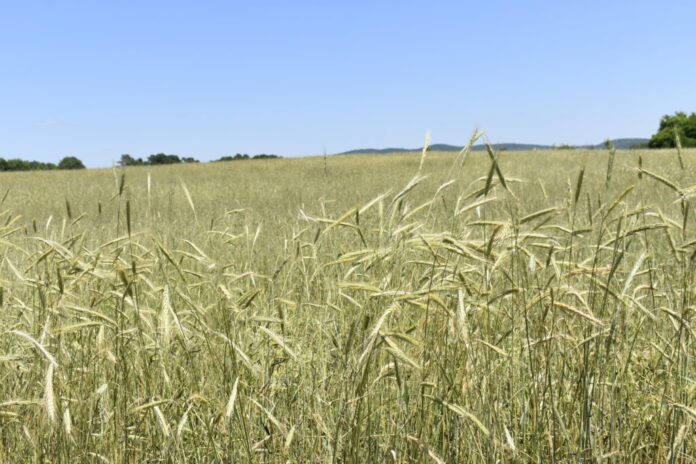
WASHINGTON (States Newsroom) — Republicans moved their long-awaited new farm bill through the U.S. House Agriculture Committee this week, despite opposition from most Democrats that could stall further advancement of the bill.
The massive $1.5 trillion legislation would set policy and funding levels for key food, agriculture and conservation programs for the next five years. After a marathon markup Thursday, the GOP-authored bill cleared the committee after midnight Friday, 33-21, with four Democratic votes.
The committee’s bill would increase farm “safety net” payments for some commodity crops, expand eligibility for disaster assistance and increase funding for speciality crops, organic farmers and dairy farmers.
It is expected to cost $1.5 trillion over 10 years. A title-by-title summary of the 942-page bill can be found here.

Democrats Don Davis of North Carolina, Sanford Bishop of Georgia, Yadira Caraveo of Colorado and Eric Sorenson of Illinois joined all committee Republicans to vote to advance the bill.
After hours of heated debate and criticism from Democrats, support from the four lawmakers across the aisle seemed to surprise House Agriculture Chair Glenn “GT” Thompson, a Pennsylvania Republican who was the bill’s primary sponsor.
His microphone picked up his aside as the vote concluded: “That was bipartisan. I did not see that one coming.”
Changes ahead
But the tepid Democratic support is likely not enough to see this version of the bill through to final passage in the House.
A handful of Republicans typically oppose farm bills over fiscal concerns. And even Democrats who voted for the bill in the House committee said it needs major changes before it could make it into law.
The measure does not have support of Democrats in the Senate or the White House.
“Everyone knows that this bill would never become law. The Senate won’t accept it and the administration won’t accept it,” Rep. David Scott of Georgia, the ranking Democrat on the committee, said at the markup. “And while this bill is a giant misstep, it nevertheless begins our journey toward passing a farm bill.”
As the House committee debated the bill, Michigan Democrat Debbie Stabenow, the chair of the Senate Agriculture Committee, said in an interview Thursday that the House proposal has no chance in the Senate.
“It tears up the farm and food coalition and does not have the votes to pass on the House floor. And certainly not in the Senate,” Stabenow told States Newsroom.
Agriculture Secretary Tom Vilsack said earlier this week that the farm bill draft would damage the coalition that traditionally has united behind farm bills and “raises the real possibility of being unable to get a farm bill through the process.”
The committee vote – which came eight months after the previous farm bill expired – was the first step in what is expected to continue to be a protracted dispute over food and farm policy.
Many farm commodity groups have come out in support of the bill, but it faces opposition from hunger advocacy groups as well as fiscal conservatives.
Heritage Foundation, National Taxpayers Union and Taxpayers for Common Sense, along with Environmental Working Group, united this week to oppose the legislation, which they characterized as a government giveaway to favored special interests.
The groups, which span the ideological spectrum, contend the proposed legislation would spend tens of billions of dollars in subsidies that would overwhelmingly go to a relatively small number of farmers who grow certain commodity crops.
Funding dispute
Historically, farm bills have brought together lawmakers across party lines, uniting on regional interests. The massive bill stitches together support for agriculture producers, energy and conservation programs on farmland and food and nutrition programs for families in need.
But committee members are deeply divided over limits on nutrition and climate programs that are the funding mechanisms for the Republican bill.
“This, on the policy side, is a very good bill,” Rep. Angie Craig, a Minnesota Democrat, said. “But on the payment side, how do you get to your math?”
The key dispute for Democrats is a funding calculation that would place limits on the formula that calculates benefits for the Supplemental Nutrition Assistance Program, SNAP, the food aid program formerly referred to as food stamps.
“One of the reasons it is so hard to negotiate the little items on this bill is because the big items and the funding mechanism are so fundamentally flawed,” Maine Democrat Chellie Pingree said.
The bill would limit future updates to the Thrifty Food Plan, the formula that calculates benefits for SNAP. This would result in a nearly $30 billion reduction in spending over ten years, based on the estimates from the Congressional Budget Office, lawmakers say.
“If we want a farm bill that is able to pass into law with the bipartisan levels that it requires to pass beyond this committee, it is necessary that we go back to the negotiating table and remove this provision,” Caraveo said.
Caraveo, who faces a tough re-election in a toss-up district, ultimately voted in favor of the bill.
Connecticut Democrat Jahana Hayes offered an amendment that would have struck the changes to the program. But after more than two hours of impassioned debate on the issue Thursday night, the amendment failed on a party-line vote, 25-29.
The farm bill has to remain budget neutral, so lawmakers must fit their proposals into a baseline projection of how much the government would spend over the next 10 years if the current farm bill was extended.
The House Republican bill would offset increases in payments for farmers by placing limits on SNAP and a discretionary account at the U.S. Department of Agriculture.
The committee-passed bill would put limits on USDA’s discretionary Commodity Credit Corporation account and would remove climate-smart policy requirements for about $13 billion in conservation projects funded by the Inflation Reduction Act.
“Farmers agree that this is good money that has come to all of our states, and is critically important,” Pingree said. “So taking away this authority from one Agriculture secretary maybe because you don’t like one program is completely misguided. It’s not thinking into the future.”
Slow Senate progress
On the Senate side, Stabenow released an outline of her own proposal for the farm bill in early May but said she is waiting for language from Republicans before they can move forward.
Among other things, Stabenow’s bill would boost eligibility for nutrition programs for low-income people like SNAP. Stabenow made public a summary of the bill, but not legislative text.
Arkansas Republican John Boozman, the Senate Agriculture Committee’s top Republican, said Thursday he supports the direction on the farm bill from the House Agriculture Committee but was not optimistic about swift movement in his chamber.
“We’ve got a lot of headwinds,” Boozman said in an interview with States Newsroom Thursday
Boozman said he plans to release language in the coming weeks but indicated lawmakers might be headed toward another extension if they cannot make progress swiftly.
“When I visit with the farm groups, I think their attitude is that rather than just doing something, if it’s not meaningful, we’re better off waiting,” Boozman told States Newsroom. “This is a five-year commitment. And, again, if we’re not going to do meaningful changes, to improve the safety of the farmers, it’s probably not worth doing.”
Election issue
The farm bill is generally considered “must-pass” legislation. Lawmakers must rewrite the sweeping legislation every five years to set mandatory funding levels and policy. The current farm bill expired at the end of September 2023 but most programs have continued through extensions.
The current extension lasts until the end of September, but it is not clear if lawmakers will make that deadline – especially as attention turns to election campaigns over the summer and fall.
The farm bill votes could be fuel in upcoming elections.
As the House committee debated the measure Thursday, the GOP candidate in the Michigan U.S. Senate race to replace Stabenow criticized Democratic candidate and committee member Elissa Slotkin for her stance on the bill. Republican Mike Rogers took to X (formerly Twitter) to say Slotkin had not focused enough on the bill.
More negotiations ahead
While the House committee engaged in 13 hours of debate on the farm bill markup, both Democrats and Republicans acknowledged that there would need to be more negotiations on the bill before it could become law.
Rep. Frank Lucas, an Oklahoma Republican and longtime committee member who chaired the panel from 2011 to 2015, characterized the committee vote as “the first step of a long journey.”
“Now, ultimately, ultimately, we must work with each other to advance a comprehensive committee product,” Lucas said.
“As we begin this process, I want to remind all my colleagues, the real struggle is not here in the Ag Committee, but on the floor of the United States House and in the conference committee. We will sort out our differences with the United States Senate.”
Jennifer Shutt contributed to this report.







